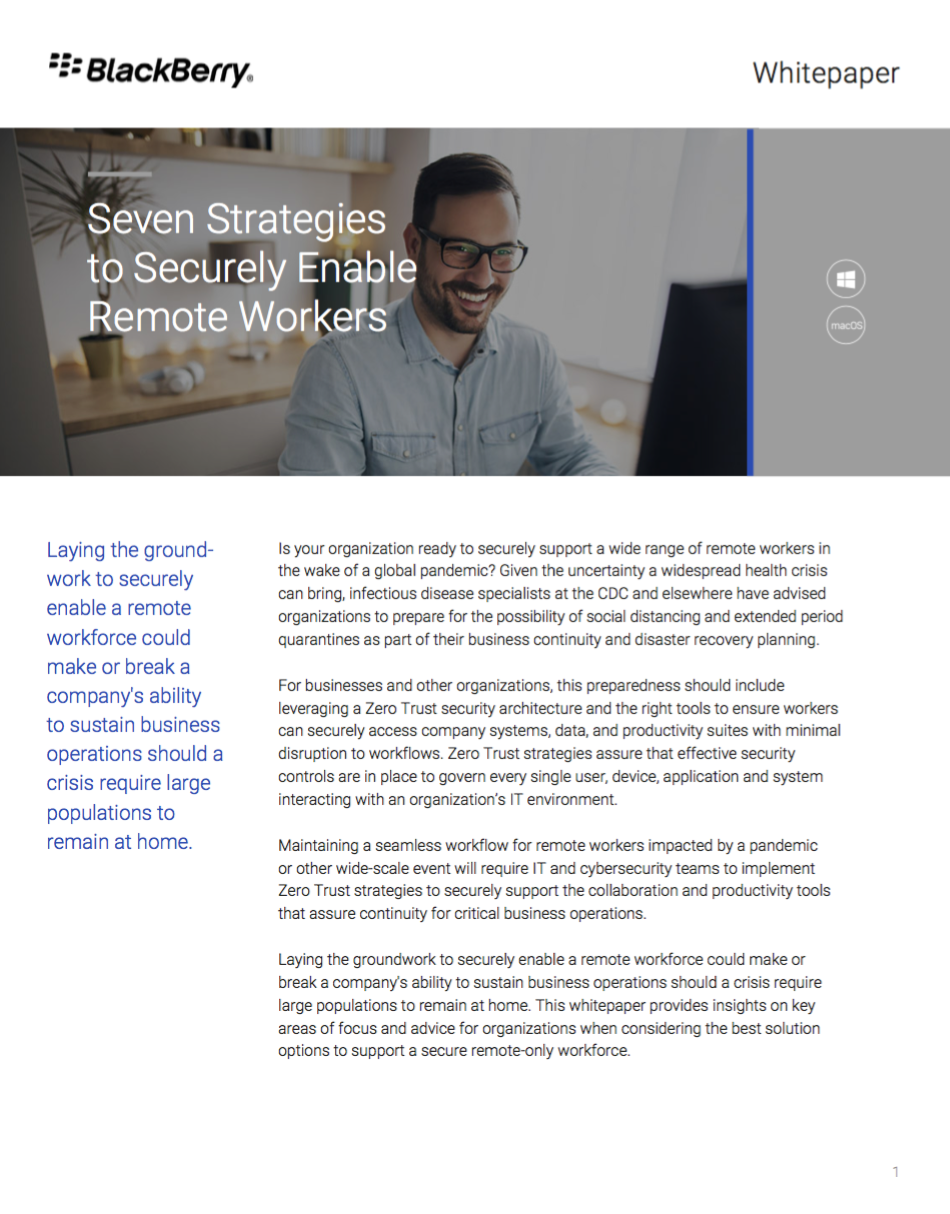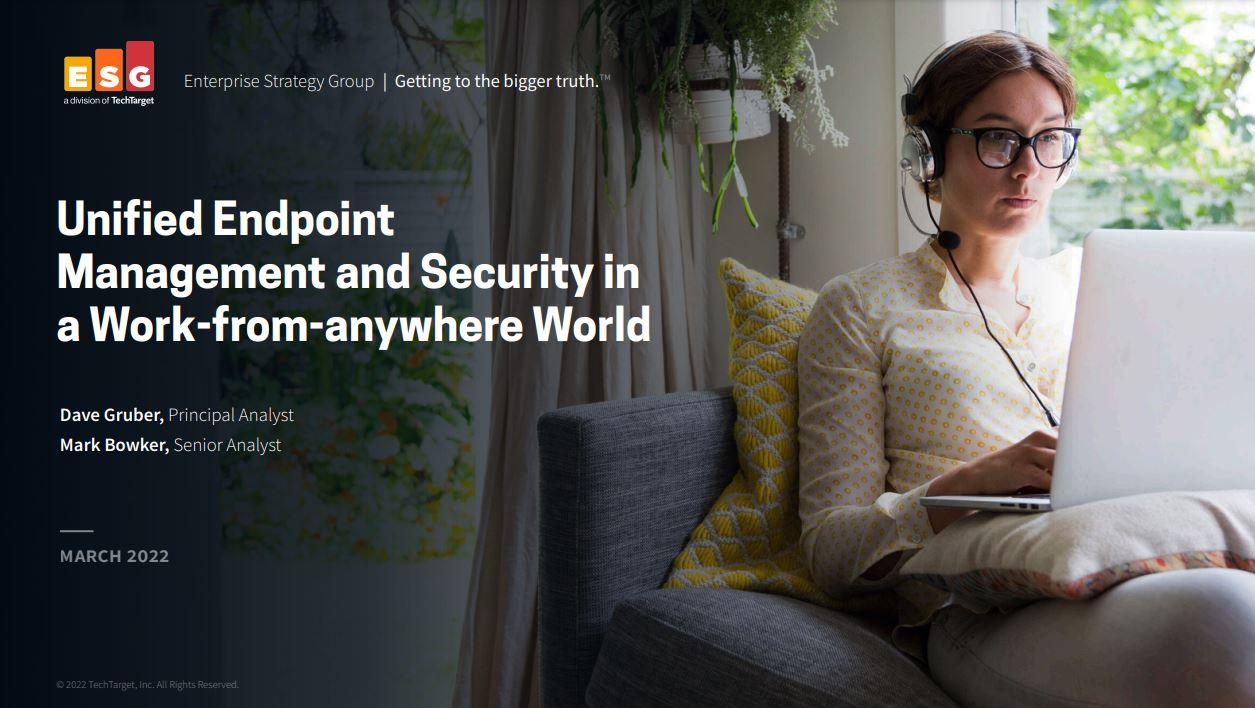IT Pro Panel: Coping with COVID-19
With businesses rapidly working to adapt to coronavirus, what has the real impact been?


As Britain enters its second week of complete lockdown, the impact of coronavirus is impossible to ignore. All businesses apart from those providing essentials like food and medicine have been ordered to shut their doors, as organisations scramble to support an unexpected wave of remote working.
While the public health risk posed by this crisis is undoubtedly the most important and troubling aspect of the current situation, many experts have raised concerns about the impact it could have on the business landscape. Industries like travel and leisure have been effectively halted overnight, while others are being forced to reimagine their business models to adapt to a state of quarantine that could last for months.
With so much change and uncertainty in the air, we spoke to some of our panellists about the impact of the crisis on their operations, the challenges of adapting to an almost-entirely remote workforce and what the future of business could look like as a result.
The great remote rush
The biggest and most obvious change brought about by COVID-19 is the huge uptick in remote working. While flexible working and working from home have been growing trends within business for several years, the lockdown has forced all businesses to embrace it at an unprecedented pace. For some, like Oxfam International’s CIO Michael Duggan, this is merely the rest of the country catching up to them.
“l run a global team from Melbourne to Montreal and most of us, when not travelling, work from home regardless,” he says, “so this is nothing new other than no travel for meetings. More importantly we are very used to remote working and the culture that goes with that – especially asynchronous work.”
“We’re in a similar position,” agrees Just Eat CISO Kevin Fielder; “for most of our 'office' workers, we’re 90+% laptops and able to work remotely. As an organisation, we’re split over multiple offices and geographies and mostly fairly flexible with work already. We had to do some work around scaling up the VPN capacity to accommodate literally everyone working from home at once, though.”
As an organisation, Richmond Events is only partly prepared for remote working reveals director of IT Liam Quinn. Despite the fact that all of its systems are already running in virtual environments using Citrix, the company has been unsuccessful in previous attempts to implement remote working and collaboration platforms, as Quinn revealed in a previous Panel discussion – something that he attributes to cultural issues and a lack of management buy-in. Now, however, adoption is a necessity and Quinn is already feeling the benefits.
Get the ITPro daily newsletter
Sign up today and you will receive a free copy of our Future Focus 2025 report - the leading guidance on AI, cybersecurity and other IT challenges as per 700+ senior executives
“We just had our first UK company virtual meeting – 40 people on GoToMeeting. It worked well, which is great. It's taking a few days for everyone to organise themselves and sort out a work area, but they seem to be getting there.The issue is getting the ad hoc communications working. The main systems are fine, but we're now getting Teams working, which we were due to do in June or July.”
“The key is just trying to get people engaged as individual groups. Most projects are now doing weekly video calls, which is helping a lot and possibly something we should have done before. I have a team across two countries and wish I'd done this sooner!”
For one of our panellists, unfortunately, things are even less simple.
“My team is not all working from home,” says SafetyKleen CIO Patricio Colombo. “We deal with hazardous waste and cleaning services, so it's one of those key sectors that still need to do on-site work. VPN became business critical overnight for us, as well as Teams and conferencing, when before it was there but not massively used.”
Wobbly workflows
Colombo says he has struggled with provisioning equipment for his staff; not just laptops for those who could work from home, but also the handheld devices his on-site crews need to do their jobs. Software has also been an issue, as SaaS services struggle to cope with unprecedented levels of demand.
“We struggled with Teams; we tend to do the team meetings with multiple users (more than 10) to display info, and then dial in on a conference line for voice in general. We use PowWowNow for conferencing, but they have struggled in the last few days as well. We upped VPN licensing for what we need, but luckily most stuff doesn't require it at the moment, and have ramped up on VoIP licenses to give people access to lines we need to operate.”
Duggan has also started seeing long lead times for laptop shipments, although Oxfam’s strong pre-existing cloud strategy has served it well in terms of software. The organisation has duplicated most of its SaaS services to provide backup options in case of outages.
“We use both Teams and Zoom for video conferencing, for example, failing over to one seamlessly if the other is unavailable. Luckily, we eliminated any dependency on user-based VPNs. And we invested significantly in dual-factor authentication (via Okta) and a Digital Rights team to manage the data privacy concerns with working from home and other COVID-related issues.”
Fielder’s company is perhaps one of the few that could potentially receive a boost from the lockdown; as a food delivery platform, Just Eat may be due for a spike in revenue as the quarantined population start craving more appealing fare. He says this hasn’t happened yet, but alongside a surge in orders, the company is also expecting a surge in security threats like social engineering and phishing.
“One big security challenge is that we have complete behaviour changes and very different usage patterns, so any baselines you may have are largely broken now,” he notes. “People are working from different locations and at random times (especially if they have kids).”
RELATED RESOURCE

Seven strategies to securely enable remote workers
Sustain business operations during a crisis by following these strategies
This is a particular problem for threat monitoring tools that use machine learning to analyse the behavioural patterns of users; under normal circumstances, users accessing systems at unusual times and locations would be a red flag, but if the entire workforce suddenly starts logging on from different places at odd hours, those monitoring systems could become much less reliable.
“I've just gone out with comms on phishing and social engineering,” Duggan adds. “Finance has reinforced controls and double-checking instructions. Banks have been informed (providing less wiggle room for them). So yes, this presents a significant cybersecurity threat.
“I agree with Kevin on the baseline issue; we are talking with security vendors on some additional controls … but the fact people are geo-locked down now is actually a boon! It’s much easier to detect anomalous activity if you have the geo-location of a sign-in. Obviously, it’s not going to stand up to a serious attacker but it limits a lot of the basics. That said, I’m very worried about cyber attacks – this is the perfect opportunity.”
Transformation central
The sudden shift to remote working is certainly the most obvious issue facing businesses today, but it may not actually be the biggest. Many businesses have seen their normal activities become suddenly unworkable and Duggan confirms that Oxfam has had its efforts massively constrained by the restrictions.
“In terms of field work, it's shut everything down. This is a massive challenge for a humanitarian organisation, both in terms of the inability to get expertise to the ground but also supply chain risk and the challenge of logistics. We are trying to mitigate that as much as possible for our existing programmes but the reality is that this will significantly constrain the ability of us and our partners to deliver services significantly, leaving aside that Covid itself is a massive humanitarian crisis in its own right and we operate in countries with limited healthcare systems.”
“Operationally,” he continues, “we have to look at any public-facing activities, such as fundraising, our retail network (nearly 1,500 stores globally), humanitarian delivery and logistics. It will have a severe impact on all of these. The question for us is firstly to understand how we can pivot to digital – for example, e-stores – and deliver on the ‘forced digital transformation’ we face. The second challenge is to deal with significant pressure on the budgets we’ll be using to deliver this. So demand is up and resources are down.”
The effects of disruption are being felt in other sectors too. Quinn’s company, for example, specialises in business events and conferences across multiple sectors, and the outbreak and subsequent lockdown has had a massive impact on his business. “You might not be surprised to hear the events industry is completely non-existent currently,” he says and admits that although the company is looking into virtual events, “it just isn’t the same”.
“I suspect it will be the same for us,” he says, echoing Duggan’s concerns around budgetary constraints. “We want to do more (and different) things, but how do we pay for it? The budgets are all being held to keep the business running. Until we know exactly what the government is providing, we need to reduce spend as much as possible.”
In essence, this shutdown has forced companies to supercharge their digital efforts, as they rapidly pivot to online-only revenue streams or face annihilation. As Duggan points out, older approaches will no longer be viable and digital-native companies like Amazon have a massive head start in the current climate.
“Long term, organisations can’t speak of ‘digital transformation’ anymore. The physical world’s power switch will be turned off for 18 months. The digital world will be the only one left on. This will shakeout any remaining physical business models and will be the inflection point to the digital age. For our organisation – and any organisation – it will be forced digital transformation.”
“About time,” comments Fielder; “I think we’ve been talking 'digital transformation' for 20-plus years! Although this only applies to 'knowledge workers’ and non physical presence service stuff.”
One opinion shared by all our panellists is that when all this is over, the business environment is going to look very different indeed.
“I think once we move beyond the initial crisis, we will see a fundamental shift to the digital economy,” Duggan muses. “Organisations that plan now for that will have a better chance of succeeding.”
“If by digital you mean flexible working and working from anywhere, then I agree,” says Fielder. “Pretty much every organisation that can is proving they can support this; it will be interesting to see how many organisations end up with anywhere near the same office presence.”
“That's the really interesting thing to look forward to,” Quinn muses. “What will business look like in the future?
If you're a senior IT decision-maker and you'd like to apply to be part of the IT Pro Panel, please email panel@itpro.co.uk.
Adam Shepherd has been a technology journalist since 2015, covering everything from cloud storage and security, to smartphones and servers. Over the course of his career, he’s seen the spread of 5G, the growing ubiquity of wireless devices, and the start of the connected revolution. He’s also been to more trade shows and technology conferences than he cares to count.
Adam is an avid follower of the latest hardware innovations, and he is never happier than when tinkering with complex network configurations, or exploring a new Linux distro. He was also previously a co-host on the ITPro Podcast, where he was often found ranting about his love of strange gadgets, his disdain for Windows Mobile, and everything in between.
You can find Adam tweeting about enterprise technology (or more often bad jokes) @AdamShepherUK.
-
 Geekom Mini IT13 Review
Geekom Mini IT13 ReviewReviews It may only be a mild update for the Mini IT13, but a more potent CPU has made a good mini PC just that little bit better
By Alun Taylor
-
 Why AI researchers are turning to nature for inspiration
Why AI researchers are turning to nature for inspirationIn-depth From ant colonies to neural networks, researchers are looking to nature to build more efficient, adaptable, and resilient systems
By David Howell
-
 IT professionals aren’t budging on flexible work demands – and more than half say they’ll quit if employers don’t meet expectations
IT professionals aren’t budging on flexible work demands – and more than half say they’ll quit if employers don’t meet expectationsNews Analysis from Randstad shows 40% of UK-based IT pros have quit over a lack of flexible work options, while 31% of workers globally have done the same.
By Ross Kelly
-
 'The tide seems to be turning towards office attendance': 64% of hybrid business leaders want staff back in the office – but many worry that enforcing RTO mandates will drive employees away
'The tide seems to be turning towards office attendance': 64% of hybrid business leaders want staff back in the office – but many worry that enforcing RTO mandates will drive employees awayAnalysis Many UK business leaders want their staff back in the office more frequently, but they’re scared to implement return to office (RTO) mandates in fear of worker revolts.
By George Fitzmaurice
-
 Employees are dead set on flexible working arrangements – three quarters would turn down a role that didn't offer hybrid options as work-life balance becomes more important than pay
Employees are dead set on flexible working arrangements – three quarters would turn down a role that didn't offer hybrid options as work-life balance becomes more important than payNews New research shows workers are increasingly demanding flexible working arrangements from employers.
By Emma Woollacott
-
 Nearly half of tech workers are seeking new roles – declining employee benefits and reduced flexible working options have staff looking elsewhere
Nearly half of tech workers are seeking new roles – declining employee benefits and reduced flexible working options have staff looking elsewhereNews While salaries are rising for tech workers, other benefits are in decline, leading to a fall in job satisfaction
By Emma Woollacott
-
 Untethered: How CIOs and CISOs are paving the way for the new hybrid workforce
Untethered: How CIOs and CISOs are paving the way for the new hybrid workforceWhitepaper Effective techniques to transition from exposed legacy infrastructure to an effective zero trust strategy
By ITPro
-
 Unified endpoint management and security in a work-from-anywhere world
Unified endpoint management and security in a work-from-anywhere worldWhitepaper Learn how to converge endpoint management and security processes and systems to drive efficiency and reduce risk
By ITPro
-
 Why flexible working is critical to ensure talent retention
Why flexible working is critical to ensure talent retentionAdvertorial The changing face of flexible working will be the focal point of a webinar hosted by the Achievers Workforce Institute on July 12
By ITPro
-
 UK tech profit warnings at highest level since pandemic
UK tech profit warnings at highest level since pandemicNews Sector uncertainty has continued to dampen profits, with the percentage of firms delisting also having risen
By Rory Bathgate